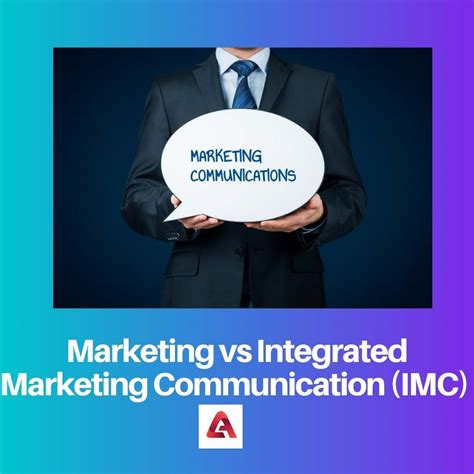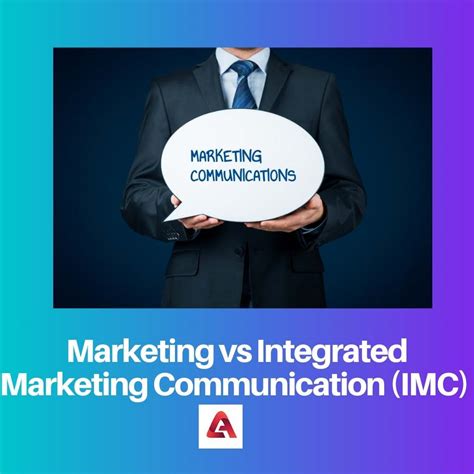In the dynamic world of influencer marketing, restrictive endorsements have become a crucial strategy for brands seeking targeted and controlled collaborations. These endorsements impose specific limitations on influencers, guiding how they promote products while ensuring alignment with brand values and compliance regulations. This article delves into the concept of restrictive endorsements, exploring their types, legal considerations, and impact on influencer partnerships. We will discuss effective strategies for negotiating these agreements, balancing restrictions with creative freedom, and measuring their success. Additionally, we’ll examine real-world case studies and future trends to help you navigate and leverage restrictive endorsements effectively.
Discover more about this topic with sizecredit.com in detail.
1. Definition and Overview of Restrictive Endorsements
Restrictive endorsements are a form of influencer marketing where brands impose specific limitations on how influencers can promote their products. These restrictions can include guidelines on the messaging, content format, or exclusivity terms that influencers must adhere to while engaging with their audience. The primary goal of restrictive endorsements is to ensure that the promotion aligns with the brand’s values and complies with legal standards, while also maintaining control over the brand’s public image.
These endorsements are often used to manage risks and ensure consistency in brand messaging. For example, a brand might restrict an influencer from endorsing competing products or require them to follow specific content guidelines to maintain brand integrity. Understanding and implementing restrictive endorsements effectively can help brands optimize their marketing strategies, protect their reputation, and achieve more controlled and measurable outcomes from their influencer partnerships.

2. Key Types of Restrictive Endorsements in Influencer Marketing
Key types of restrictive endorsements in influencer marketing include:
Exclusivity Agreements: These require influencers to promote only one brand or product within a specific category, preventing them from endorsing competitors. This ensures that the influencer’s endorsement remains unique and undiluted.
Content Guidelines: Brands may set specific rules about how products should be presented in content, such as using particular messaging, avoiding certain topics, or adhering to visual aesthetics. This helps maintain brand consistency and control.
Frequency Restrictions: Influencers may be limited in how often they can mention or promote the brand within a set period, to prevent overexposure and maintain engagement levels.
Geographic Limitations: Endorsements might be restricted to certain regions or countries, ensuring that promotional content is relevant to targeted audiences and complies with local regulations.
Platform Constraints: Some agreements limit the promotion to specific social media platforms or content types, focusing on channels that align with the brand’s strategy.
Understanding these types helps brands tailor their influencer partnerships to achieve desired outcomes while maintaining control over their marketing efforts.

3. Legal Considerations and Compliance Issues
When implementing restrictive endorsements, brands must navigate several legal considerations and compliance issues to ensure their marketing efforts align with regulations.
Disclosure Requirements: Influencers are legally obligated to disclose any material connections with brands, such as through clear statements like “#ad” or “#sponsored.” Failing to do so can lead to legal repercussions and damage brand credibility.
Contractual Obligations: Restrictive endorsement agreements must be clearly defined in contracts, specifying the limitations, expectations, and any penalties for non-compliance. Proper legal documentation protects both parties and ensures mutual understanding.
Intellectual Property Rights: Brands must address intellectual property concerns, including rights to use influencer-created content and restrictions on the use of brand assets. Proper agreements should be in place to avoid disputes over content ownership.
Compliance with Advertising Standards: Adherence to advertising standards and guidelines set by regulatory bodies, such as the Federal Trade Commission (FTC) in the U.S., is crucial. These guidelines ensure that endorsements are truthful and not misleading.
Addressing these legal and compliance issues helps mitigate risks and fosters successful, transparent influencer partnerships.

4. Impact on Influencer Partnerships and Brand Relationships
Restrictive endorsements significantly impact influencer partnerships and brand relationships by shaping how both parties interact and collaborate. These restrictions can strengthen brand-influencer relationships when managed well, as they establish clear expectations and protect both parties’ interests. However, they can also pose challenges.
Enhanced Brand Control: By setting specific guidelines and limitations, brands ensure that their messaging remains consistent and aligned with their values. This control helps prevent misrepresentation and maintains a cohesive brand image across all promotional content.
Influencer Flexibility: Restrictive endorsements can limit an influencer’s creative freedom, potentially affecting their ability to produce authentic content. While clear guidelines help maintain brand integrity, they can also stifle the influencer’s unique voice and reduce engagement if not balanced properly.
Relationship Dynamics: Stricter endorsements may lead to more formal and transactional relationships, which can impact the personal connection between the brand and influencer. This formality can affect the influencer’s enthusiasm and willingness to go above and beyond in their promotions.
Negotiation Challenges: Negotiating restrictive terms can sometimes create friction or disputes between brands and influencers. Clear, transparent communication is essential to address concerns and find a mutually agreeable framework.
Overall, managing restrictive endorsements requires careful consideration to balance brand control with influencer creativity and relationship dynamics.

5. Strategies for Negotiating Restrictive Endorsements
Negotiating restrictive endorsements requires a strategic approach to ensure both brand objectives and influencer interests are met.
1. Clear Communication: Begin with transparent discussions about the brand’s expectations and the specific restrictions being proposed. Ensure that influencers understand the rationale behind the restrictions and how they align with the brand’s goals.
2. Flexibility in Terms: Offer some flexibility within the restrictive terms to accommodate the influencer’s creative style and preferences. This can help maintain their authenticity and engagement with their audience.
3. Mutual Benefits: Highlight how the restrictive endorsement can benefit both parties, such as through exclusive partnerships or increased compensation. Emphasize the value of the collaboration to motivate the influencer.
4. Legal Clarity: Draft comprehensive contracts that clearly outline all restrictions, expectations, and penalties. This reduces misunderstandings and protects both parties.
5. Continuous Dialogue: Maintain open lines of communication throughout the campaign to address any issues or adjustments needed, fostering a positive working relationship.
These strategies help create a balanced agreement that satisfies both the brand’s needs and the influencer’s creative freedom.

6. Balancing Restrictions with Creative Freedom
Balancing restrictions with creative freedom is crucial for maintaining effective influencer partnerships while ensuring brand guidelines are met.
1. Collaborative Approach: Involve influencers early in the process when setting restrictions to ensure their input is considered. This collaborative approach helps create guidelines that align with both brand objectives and the influencer’s style.
2. Flexible Guidelines: Design restrictions that provide room for creativity. Instead of rigid rules, use broad guidelines that allow influencers to incorporate their unique voice and personal touch into the content. This flexibility can enhance authenticity and audience engagement.
3. Clear Objectives: Clearly communicate the core objectives and key messages of the campaign. When influencers understand the brand’s goals, they can better tailor their creative approach to meet these objectives while staying within the set boundaries.
4. Regular Feedback: Implement a feedback loop where influencers can share their ideas and concerns. Regular check-ins can help address any issues early and ensure that content aligns with both brand standards and influencer creativity.
5. Incentivize Creativity: Offer additional incentives for innovative and high-quality content that meets the restrictions. This encourages influencers to go beyond the minimum requirements while adhering to the guidelines.
By balancing these elements, brands can ensure that their restrictive endorsements remain effective without stifling the influencer’s creativity.

7. Case Studies: Successful Implementations of Restrictive Endorsements
Case studies of successful implementations of restrictive endorsements highlight how brands can effectively manage these agreements while achieving their marketing goals.
1. Example: Nike and Athlete Exclusivity: Nike has successfully used restrictive endorsements by signing exclusive contracts with high-profile athletes. These agreements prevent athletes from endorsing competing sports brands, ensuring that Nike’s branding remains prominent and uncontested. The athletes adhere to specific content guidelines, which helps maintain a consistent brand message while allowing for personal expression within those parameters. This strategy has strengthened Nike’s brand presence and athlete loyalty.
2. Example: Coca-Cola’s Content Guidelines: Coca-Cola’s campaigns often involve influencers who must follow detailed content guidelines, including specific messaging and visual style. This approach has allowed Coca-Cola to ensure that all promotional content aligns with its brand identity while still benefiting from the influencers’ unique styles. The flexibility within these guidelines helps maintain authenticity and engagement with the audience.
3. Example: Apple’s Platform Restrictions: Apple has used restrictive endorsements by partnering with influencers who promote their products exclusively on specific platforms, such as Instagram or YouTube. This targeted approach maximizes the effectiveness of their campaigns and ensures that content is tailored to the platform’s strengths.
These case studies illustrate that with careful planning and clear communication, restrictive endorsements can be implemented successfully, driving both brand consistency and influencer engagement.

8. Common Pitfalls and How to Avoid Them
Common pitfalls in restrictive endorsements can undermine the effectiveness of influencer marketing campaigns. Recognizing these pitfalls and addressing them proactively can lead to more successful partnerships.
1. Overly Restrictive Guidelines: Imposing too many limitations can stifle an influencer’s creativity and reduce the authenticity of the content. To avoid this, focus on broad guidelines that maintain brand integrity while allowing influencers room to express their unique style.
2. Lack of Clear Communication: Misunderstandings between brands and influencers regarding the restrictions can lead to conflicts or unsatisfactory results. Ensure clear, upfront communication about all expectations and limitations to avoid confusion and align goals.
3. Inadequate Compensation: Restrictive endorsements can sometimes be perceived as limiting, making it essential to offer adequate compensation. Ensure that the benefits and compensation provided are commensurate with the level of restriction and effort required.
4. Neglecting Legal Aspects: Failing to address legal and compliance issues can lead to regulatory problems and potential legal disputes. Draft comprehensive contracts that clearly outline all terms, restrictions, and obligations to safeguard both parties.
5. Insufficient Monitoring: Not monitoring the campaign closely can result in deviations from the agreed restrictions or missed opportunities for optimization. Regularly review and provide feedback on content to ensure adherence to guidelines and address any issues promptly.
By addressing these pitfalls, brands can enhance the effectiveness of restrictive endorsements and foster more positive, productive influencer relationships.

9. Measuring the Effectiveness of Restrictive Endorsements
Measuring the effectiveness of restrictive endorsements involves assessing various metrics to determine how well the restrictions are achieving their intended outcomes.
1. Engagement Metrics: Track likes, comments, shares, and overall engagement on content produced under restrictive endorsements. High engagement levels indicate that the content resonates with the audience despite restrictions.
2. Brand Sentiment Analysis: Analyze comments and feedback to gauge public perception of the brand and its products. Positive sentiment and brand affinity are key indicators of successful endorsement.
3. Compliance Tracking: Ensure that influencers adhere to the set restrictions and guidelines. Monitor their content to confirm alignment with the brand’s messaging and legal requirements.
4. Conversion Rates: Measure the impact of the endorsement on conversions, such as click-through rates, purchases, or sign-ups. Higher conversion rates suggest that the restrictions are effectively guiding the influencer’s content towards achieving marketing goals.
5. ROI Analysis: Evaluate the return on investment by comparing the costs of restrictive endorsements to the generated results. This helps determine the overall effectiveness and financial viability of the endorsement strategy.
By using these metrics, brands can assess the impact of restrictive endorsements and refine their strategies for future campaigns.

10. Future Trends and Predictions in Restrictive Endorsements
Future trends in restrictive endorsements are likely to evolve with the changing landscape of influencer marketing.
1. Increased Personalization: Brands will focus on more personalized and targeted restrictions, leveraging data analytics to tailor endorsements to specific audience segments and enhance relevance.
2. Greater Flexibility: There will be a shift towards allowing more creative freedom within restrictions. Brands are expected to provide broader guidelines rather than rigid rules, enabling influencers to maintain authenticity while meeting brand goals.
3. Enhanced Compliance Technology: Advances in technology will improve the tracking and enforcement of compliance. Tools for monitoring content and ensuring adherence to guidelines will become more sophisticated.
4. Focus on Long-term Partnerships: Brands will likely emphasize long-term relationships with influencers, integrating restrictions into broader, ongoing collaborations rather than one-off campaigns.
5. Evolving Legal Standards: As regulations around digital advertising and endorsements continue to develop, brands and influencers will need to stay updated on new legal requirements to ensure compliance.
These trends suggest a more dynamic and adaptive approach to restrictive endorsements in the futur

Restrictive endorsements, when managed effectively, can offer brands valuable control over their influencer marketing efforts while maintaining alignment with their core values and legal standards. By understanding the various types, legal considerations, and strategic approaches, brands can create successful partnerships that balance restrictions with influencer creativity. Learning from case studies and avoiding common pitfalls will further enhance the effectiveness of these endorsements. As influencer marketing continues to evolve, staying informed about future trends will help brands adapt and optimize their strategies for maximum impact and engagement.
sizecredit.com
